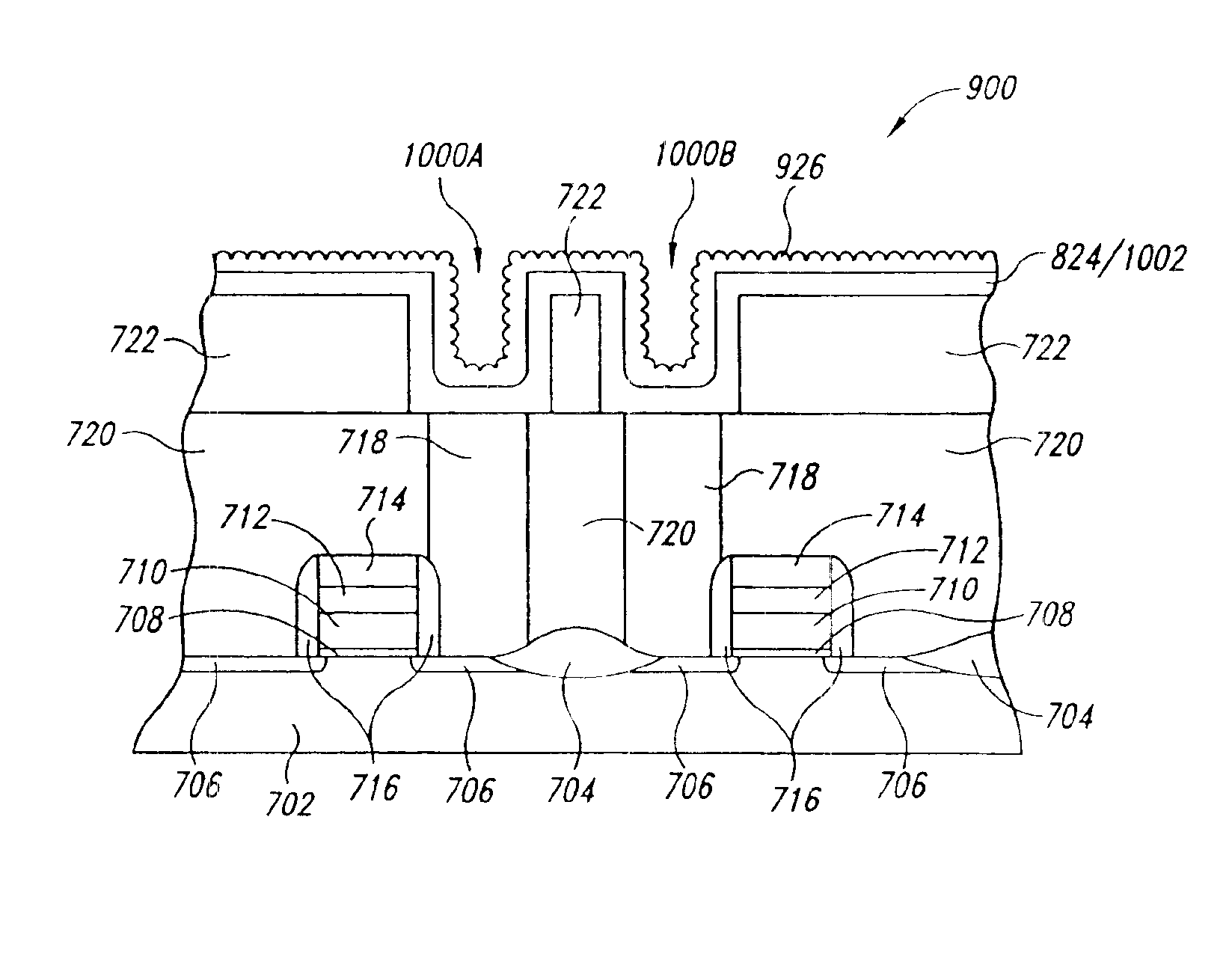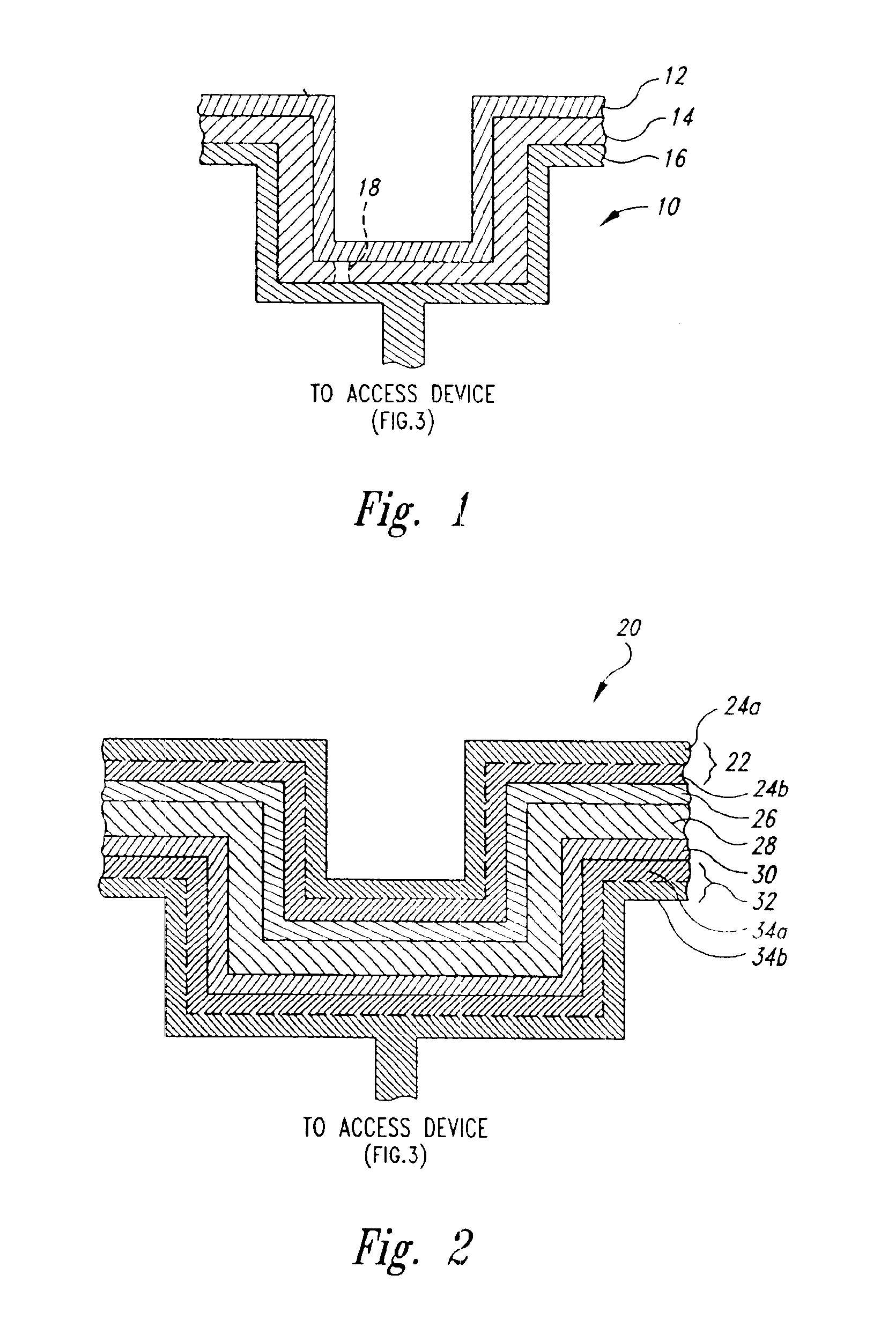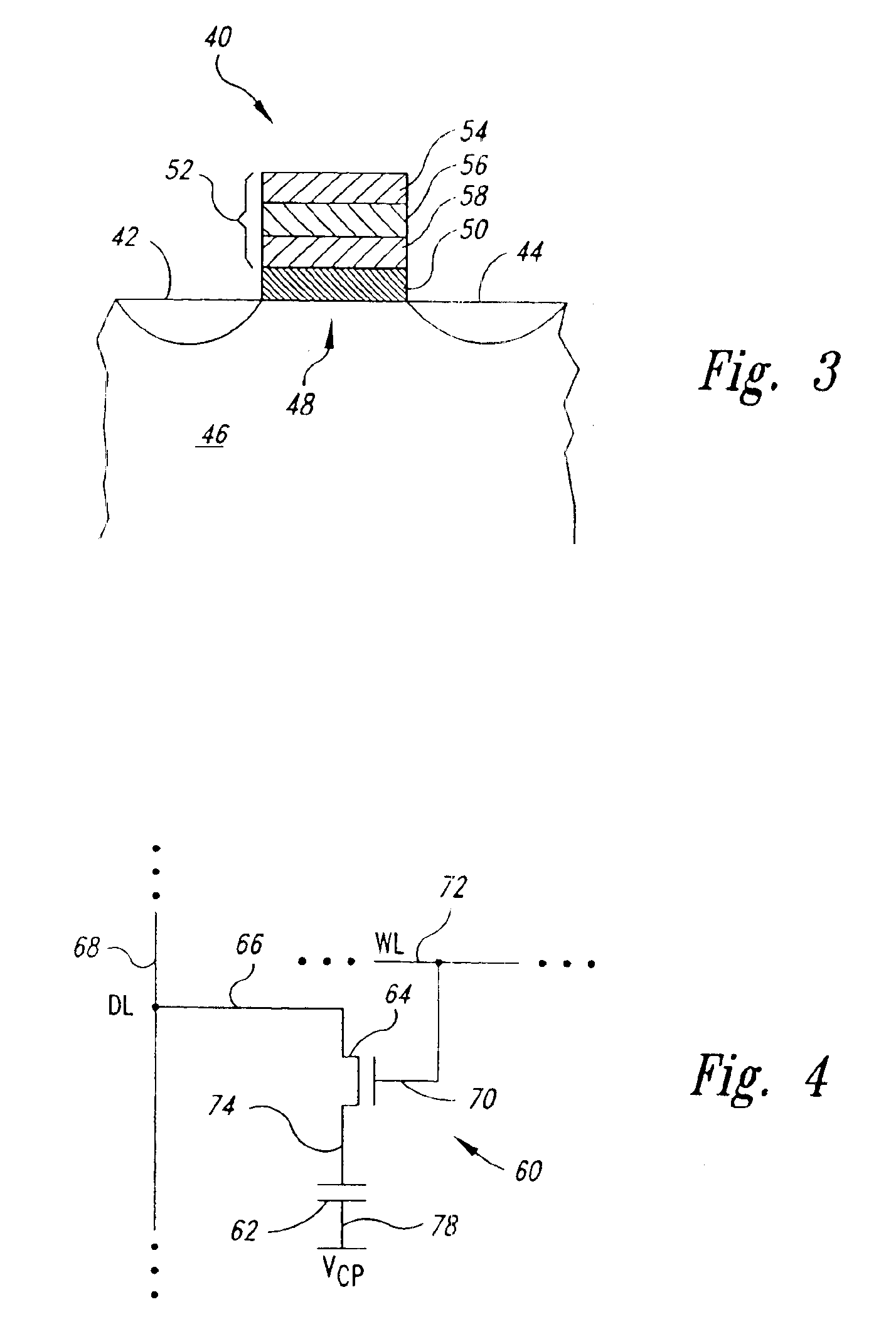Methods for enhancing capacitors having roughened features to increase charge-storage capacity
a capacitor and feature enhancement technology, applied in capacitors, solid-state devices, instruments, etc., can solve the problems of reducing the storage capacity of dram capacitors, unable to store data reliably, and shrinking the size of dram capacitors, so as to enhance the structural integrity of the semiconductor structure, increase the surface area, and the capacitance of the capacitors
- Summary
- Abstract
- Description
- Claims
- Application Information
AI Technical Summary
Benefits of technology
Problems solved by technology
Method used
Image
Examples
Embodiment Construction
[0020]FIG. 1 is a cross-sectional view of a DRAM capacitor 10 according to one embodiment of the invention. The capacitor 10 includes a conventional electrode 12, which is formed from a conductive material such as polysilicon. The electrode 12 is adjacent to one side of a conventional dielectric 14, which is formed from an insulator such as silicon dioxide, barium strontium titanate, or tantalum pentaoxide. Another electrode 16 is adjacent to another side of the dielectric 14, and is coupled to a DRAM-cell access device, such as a transistor. The electrode 16 is formed from a barrier material, and thus may be called a barrier electrode. The barrier electrode 16 may include conventional barrier materials, such as titanium nitride, or may include tungsten nitride, tungsten silicon nitride, or titanium silicon nitride, which are discussed below in conjunction with FIG. 3. Furthermore, although described for use in a DRAM cell, the capacitor 10 can be used for other applications and in ...
PUM
 Login to View More
Login to View More Abstract
Description
Claims
Application Information
 Login to View More
Login to View More - R&D
- Intellectual Property
- Life Sciences
- Materials
- Tech Scout
- Unparalleled Data Quality
- Higher Quality Content
- 60% Fewer Hallucinations
Browse by: Latest US Patents, China's latest patents, Technical Efficacy Thesaurus, Application Domain, Technology Topic, Popular Technical Reports.
© 2025 PatSnap. All rights reserved.Legal|Privacy policy|Modern Slavery Act Transparency Statement|Sitemap|About US| Contact US: help@patsnap.com



